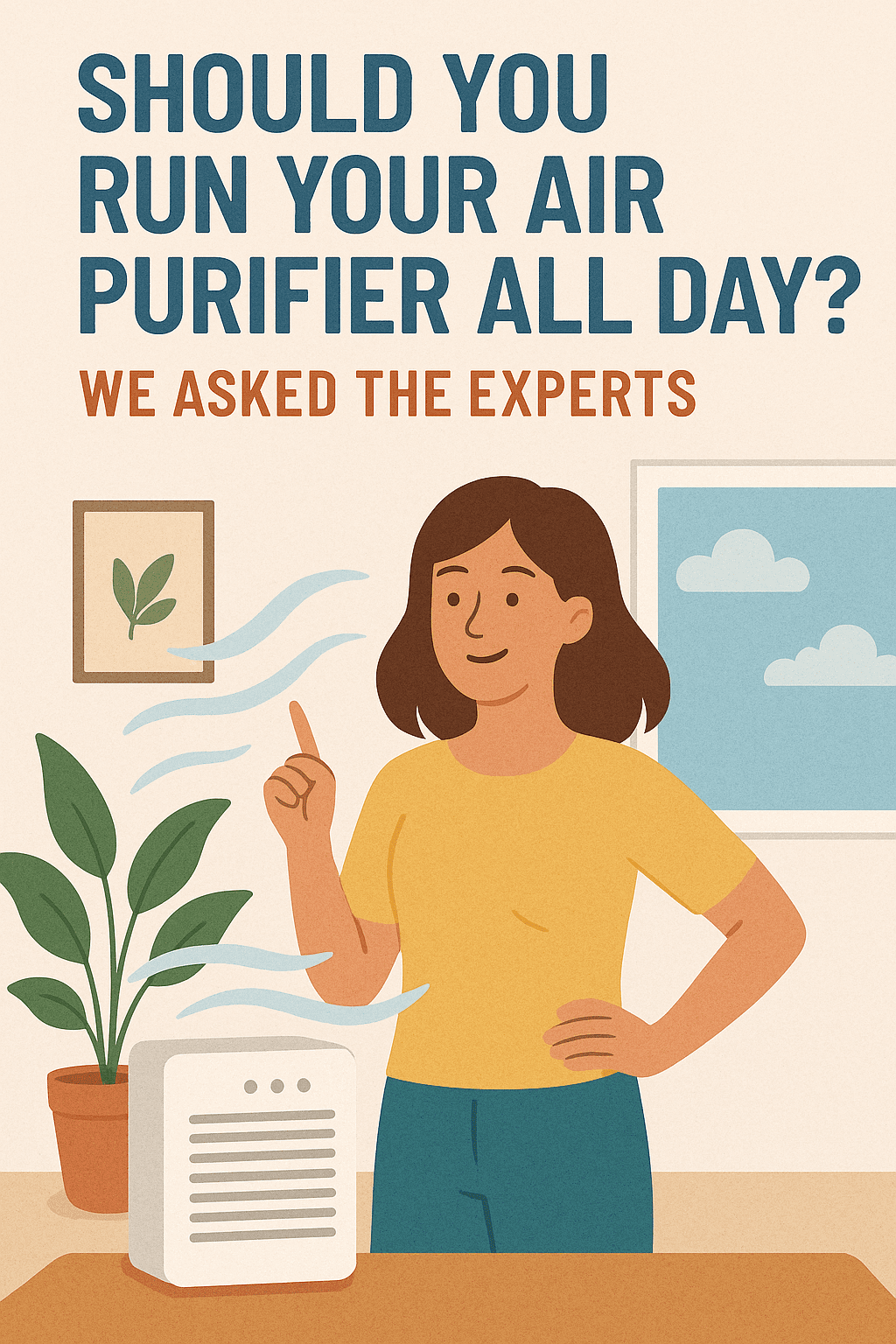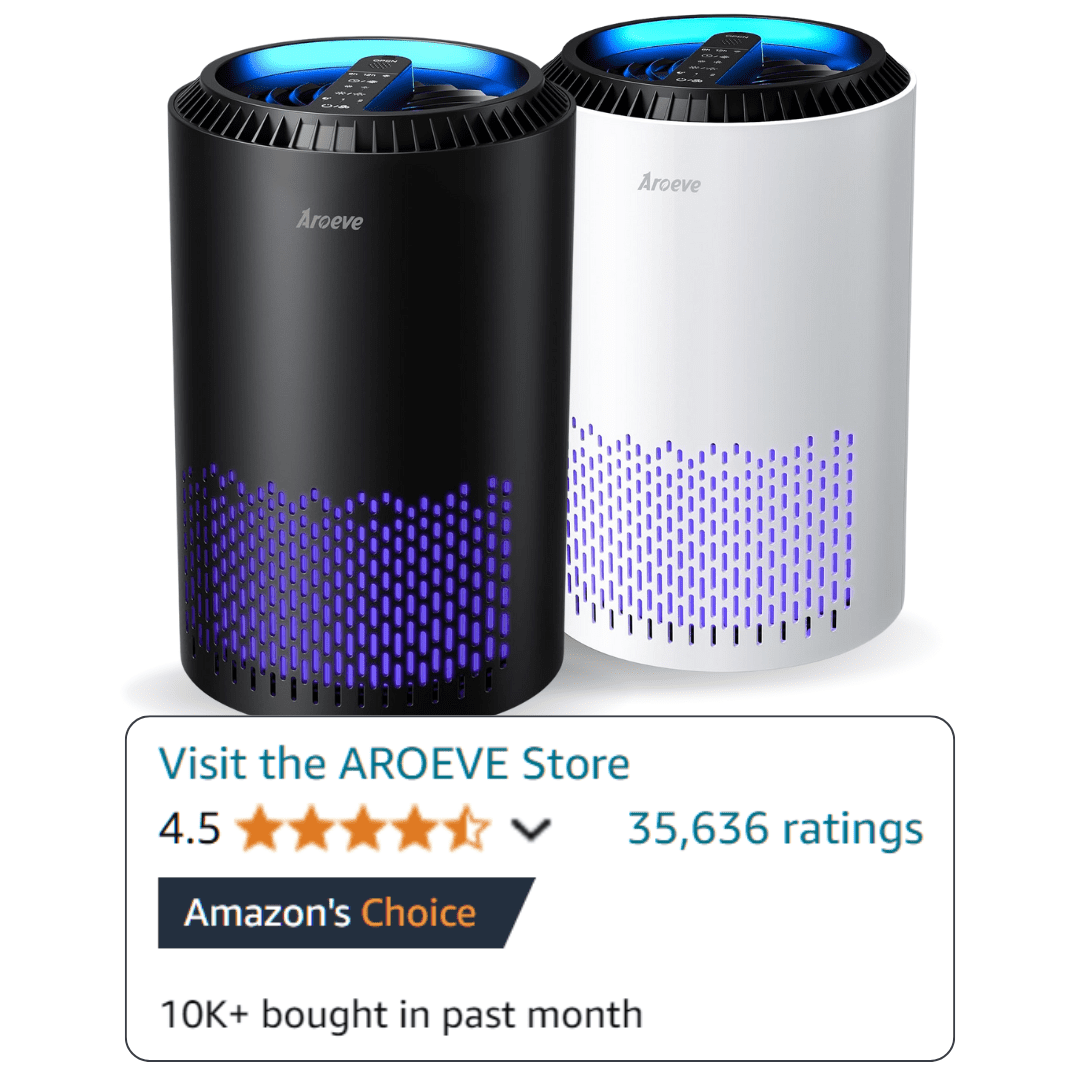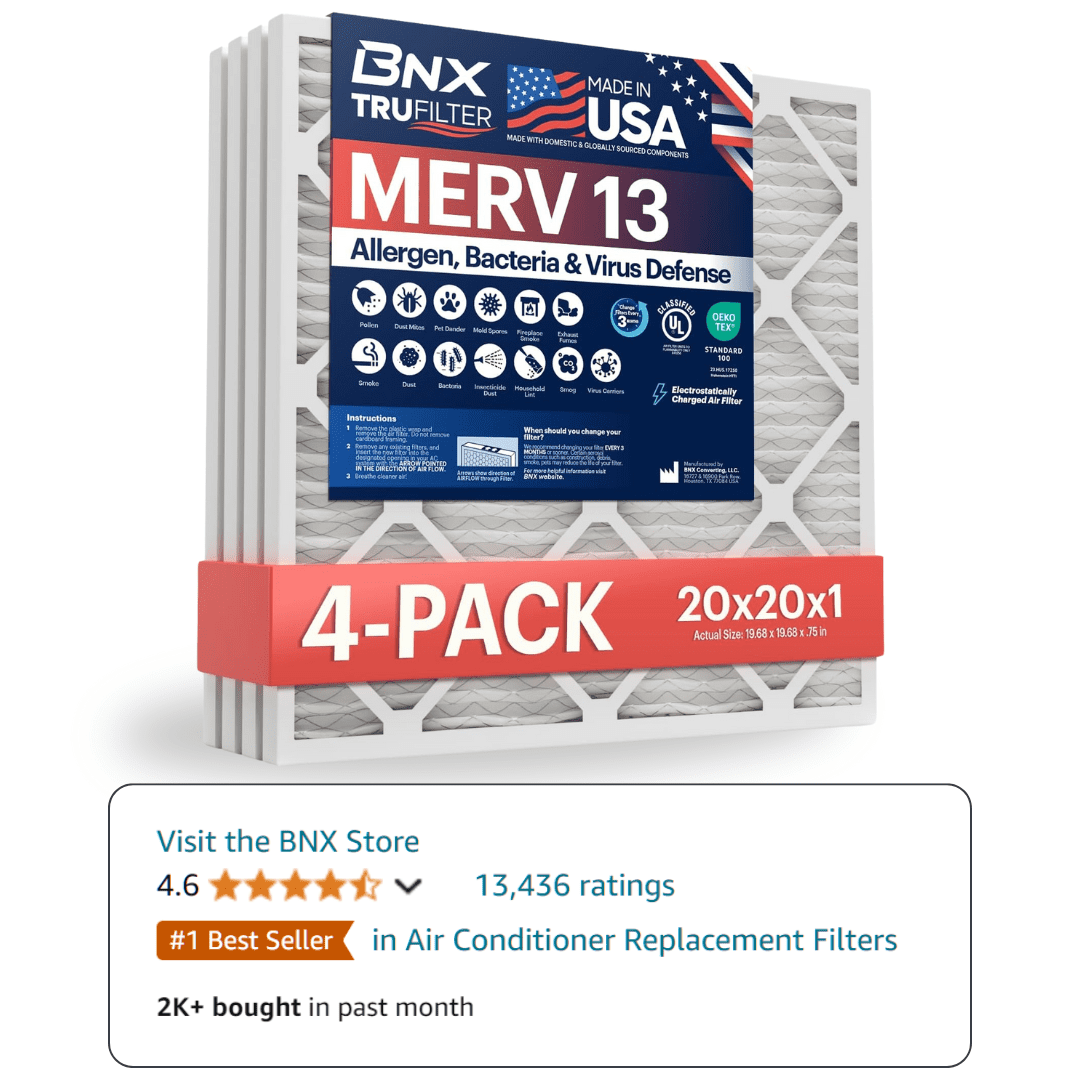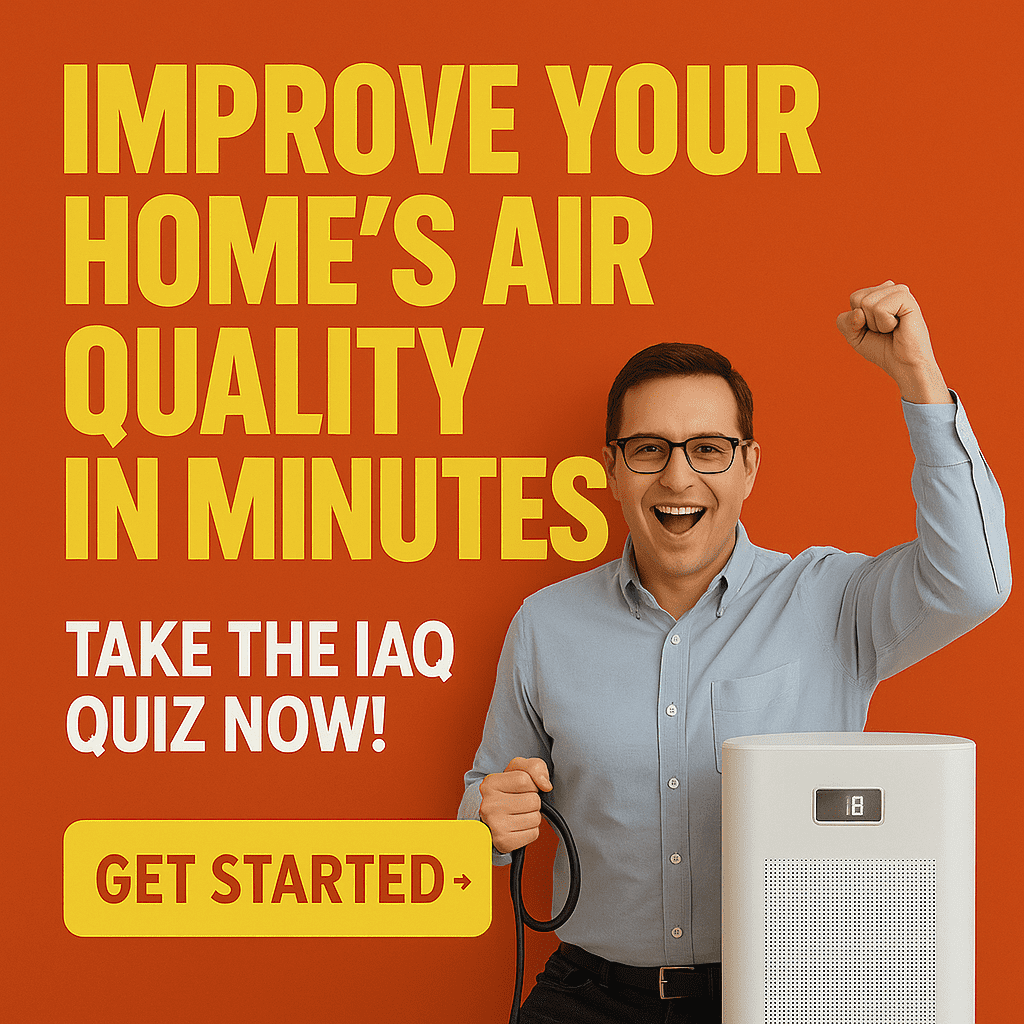You’ve invested in an air purifier to breathe cleaner air, but now the big question: should it be on duty 24/7?
It’s a common puzzle for many homeowners. You want the freshest air possible, but you also wonder about electricity bills, filter costs, and how long your machine will last if it’s always running. It’s a balance between wanting pure air and being practical about everyday expenses.
We’ve gathered information and insights from experts to give you clear answers.
We’ll explore whether running your air purifier all day is the best choice for your home and health. For most people and most situations, keeping your air purifier on continuously is generally a good idea for the best air quality.
However, there are a few things to think about to make sure you’re doing it right.
We asked the experts to get you the most reliable advice for 2025.
Is 24/7 Air Purification Generally Recommended? (short answer)
Yes, for optimal and consistent air quality, experts often recommend continuous operation of your air purifier. This is especially true if your unit has smart features like an “auto mode” or if you have specific health concerns, such as allergies or asthma.
Why? Think of it this way: pollutants are sneaky.
They don’t just appear once and then vanish. Dust, pet dander, pollen, and tiny particles from cooking or outdoor pollution are constantly being introduced into your home’s air. Running your air purifier all the time helps to constantly filter out these unwelcome guests. This continuous filtration helps maintain a baseline of clean air, so you’re always breathing easier, not just for a few hours after you turn it on.
Why Continuous Operation Works
Air purifiers are designed to clean the air in a specific room, and they do this using a combination of filters. Most quality air purifiers use a HEPA filter, which stands for High-Efficiency Particulate Air. These filters are excellent at trapping tiny particles like dust, pollen, pet dander, and even some bacteria and viruses.
Many also include an Activated Carbon filter, which is great for absorbing odors, gases, and volatile organic compounds (VOCs) from things like cleaning products, new furniture, or paint.
A key concept here is ACH (Air Changes per Hour). ACH tells you how many times an air purifier can clean all the air in a specific-sized room in one hour.
For example, if a purifier has an ACH of 5 for a 200-square-foot room, it means it can cycle through and clean the entire volume of air in that room five times every hour. Continuous operation ensures that the purifier consistently achieves these air changes.
If you only run it sometimes, pollutant levels can quickly build back up when it’s off. Dust settles, pollen blows in, and pets shed dander constantly.
What Do IAQ Specialists Say About Running Air Purifiers All Day?
When it comes to indoor air quality (IAQ), specialists generally agree that consistency is key. Running an air purifier continuously, especially in certain situations, offers significant benefits.
Allergists and Immunologists often recommend continuous air purifier use for their patients with allergies or asthma. They emphasize that allergens like pollen, dust mites, and pet dander are persistent. Constant filtration helps reduce the concentration of these triggers in the air, leading to fewer symptoms and better respiratory health. For these individuals, an air purifier isn’t just a convenience; it’s an important tool for managing their health.
HVAC Technicians and IAQ Consultants look at the practical side. They point out that modern air purifiers, especially those with energy-efficient motors and smart sensors, are designed for continuous operation. They advise that running a unit on a lower, constant setting or on “auto mode” is often more effective and efficient than running it on high for short bursts. This maintains a steady state of cleaner air without overworking the unit or consuming excessive energy.
Environmental Health Scientists study how pollutants accumulate indoors. They highlight that indoor environments can trap pollutants, sometimes leading to air quality that is worse than outdoors. Sources like cooking, cleaning products, and even breathing can release particles and VOCs. These scientists support continuous air purification as a way to actively reduce long-term exposure to these harmful substances.
Organizations like the U.S. Environmental Protection Agency (EPA) suggest that air cleaners can be a helpful part of a strategy to improve indoor air quality, especially when used along with source control and ventilation. While they may not explicitly mandate 24/7 use for all scenarios, their guidance often points to the benefits of consistent air cleaning when pollutants are a concern. Similarly, the American Lung Association (ALA) acknowledges that air purifiers can help create healthier indoor environments, particularly for those with lung conditions, implying that consistent use yields the best results for symptom management.
Benefits of Running Your Air Purifier Continuously (The Pros)
Keeping your air purifier running around the clock offers several advantages for your home and health.
- Consistent reduction of airborne allergens: If you suffer from allergies, you know that pollen, dust mites, and pet dander are constant enemies. An air purifier running 24/7 works tirelessly to trap these particles, meaning fewer sniffles, sneezes, and itchy eyes.
- Ongoing removal of pollutants: Beyond allergens, your indoor air can contain smoke particles (from cooking or outside), VOCs (from cleaning supplies or new furniture), and unpleasant odors. Continuous purification helps to steadily remove these, making your air smell fresher and feel cleaner.
- Improved sleep quality: Many people place air purifiers in their bedrooms. Running one all night can significantly reduce airborne irritants that might otherwise disturb your sleep, helping you wake up feeling more refreshed. Cleaner air can mean less nighttime coughing or congestion.
- Better respiratory health, especially for sensitive individuals: For people with asthma, COPD, or other respiratory sensitivities, cleaner air isn’t just a comfort – it’s a necessity. Constant air purification can reduce the triggers that cause flare-ups and improve overall lung function.
- Proactive defense against airborne viruses and bacteria: HEPA filters are capable of capturing a portion of airborne viruses and bacteria. While an air purifier isn’t a magic shield, running it continuously can help reduce the concentration of these microbes in the air, adding an extra layer of protection, especially during cold and flu season.
Potential Downsides & Considerations for 24/7 Use (The Cons)
While running your air purifier all day has many benefits, there are a few practical things to keep in mind.
- Energy Consumption: Air purifiers use electricity, and running one 24/7 will add to your energy bill. The amount depends on the purifier’s wattage. A small, energy-efficient model might only use 20-50 watts, while a very large, powerful one could use 100 watts or more. Look for Energy Star certified models, as these are designed to be more energy-efficient. To estimate cost, find your unit’s wattage (e.g., 50W), calculate daily kWh (0.05 kW * 24 hours = 1.2 kWh), and multiply by your electricity rate.
- Filter Replacement Frequency & Cost: The harder your purifier works, the faster its filters will get dirty and need replacing. If you run it continuously, expect to change filters more often – perhaps every 3-6 months for HEPA and carbon filters, compared to 6-12 months with less frequent use. Filter costs can add up, so factor this into your budget.
- Noise Levels: Some air purifiers can be noisy, especially on their highest fan settings. If you’re sensitive to noise, this could be an issue for 24/7 operation, particularly in bedrooms or quiet living spaces. Many modern units have a “sleep mode” which runs very quietly, or an “auto mode” that adjusts fan speed based on air quality, often keeping it on a lower, quieter setting.
- Device Lifespan: Like any appliance with a motor, an air purifier has a lifespan. Running it constantly could theoretically wear out the motor faster than sporadic use. However, quality air purifiers are generally built to withstand long hours of operation. This is usually a minor concern if you’ve invested in a reputable brand.
When to Adjust Run Time
While 24/7 operation is often best, your specific situation might call for adjustments. Here are some factors to consider:
- Room Size & Purifier’s CADR (Clean Air Delivery Rate): CADR indicates how quickly the purifier can clean the air in a particular room size. If your purifier’s CADR is well-matched or even oversized for your room, it might clean the air effectively without needing to run on high constantly. If the CADR is too low for the room, you’ll likely need to run it 24/7, possibly on a higher setting, to make a difference.
- Severity of Air Quality Issues: If you live in an area with high pollen counts, near a busy road, experience seasonal wildfire smoke, or have smokers or multiple pets in the household, your indoor air quality challenges are greater. In these cases, continuous operation is highly recommended. If your air is generally clean, you might adjust.
- Occupancy & Activity Levels: More people and more activity in a room stir up more particles (like dust and dander). It makes sense to have the purifier running when the room is occupied and active. When you’re not home, you might consider a lower setting if your unit doesn’t have an auto mode. Addressing a common question, “Is it safe to leave air purifier on when not home?” Generally, yes. Modern air purifiers are designed with safety in mind for continuous use, provided they are placed on a stable surface with clear vents.
- Type of Air Purifier & Its Features:
- Smart/Auto Mode: This feature is a game-changer for 24/7 use. Purifiers with air quality sensors can detect pollutants and automatically adjust their fan speed. When the air is clean, they run on a low, quiet, energy-saving mode. When pollution is detected, they ramp up. This makes continuous operation very practical and efficient.
- Manual units: If your purifier only has manual fan speed settings (low, medium, high), you’ll need to decide. Running it continuously on a low or medium setting is often a good compromise.
- Specific Room Usage:
- Bedroom: “How long to run air purifier in bedroom?” is a frequent query. For optimal sleep and to reduce morning allergy symptoms, it’s often beneficial to run the air purifier all night. Many also keep it running during the day to maintain that clean air environment for when they return.
- Living Areas: Continuous operation during hours of occupancy is usually best, especially if it’s a high-traffic area or where pets spend most of their time.
Optimizing Your Air Purifier for Continuous (Or Near-Continuous) Use
If you decide to run your air purifier most or all of the time, here’s how to make it work best for you:
- Leverage “Auto Mode”: If your unit has it, use it! This is the most efficient way to run an air purifier 24/7. It senses the air quality and adjusts the fan speed accordingly, saving energy and filter life when the air is already clean.
- Strategic Placement: Many ask, “Should air purifier be on floor?” Typically, yes, the floor is fine, or slightly elevated on a low, stable table. The most important thing is to ensure good airflow around the unit. Don’t push it against a wall or hide it behind furniture, as this will block its intake and outlet vents, reducing effectiveness.
- Regular Filter Maintenance: This is crucial. Check your filters regularly, following the manufacturer’s recommendations. If you live in a polluted area or have pets, you might need to replace them sooner. If your unit has a washable pre-filter, clean it often (e.g., every 2-4 weeks) to help the main filters last longer and work more efficiently.
- Right-Sizing Your Unit: Make sure the air purifier’s CADR is appropriate for your room size. An undersized unit will struggle to clean the air effectively, even if run continuously, and will likely wear out its filters faster.
- Consider When Windows are Open: If you open windows for fresh air for an extended period, you might choose to temporarily turn off your air purifier to save filter life and energy, as it will be trying to clean the entire neighborhood’s air! However, if outdoor air quality is poor (e.g., during wildfire season or high pollen days), it’s better to keep windows closed and the purifier running.
What About Specific Brands? (e.g., “How long to run air purifier Levoit”)
The general advice about running an air purifier continuously applies to most reputable brands, including popular ones like Levoit, Winix, Coway, Blueair, and Honeywell. Questions like “How long to run air purifier Levoit” are common, and the answer is generally the same: for optimal results, especially if you have health concerns or noticeable air quality issues, running it 24/7 is often best.
Many modern models from these brands, such as the Levoit Core 300S Smart Air Purifier, Winix 5500-2, or Levoit Core 400S, come equipped with excellent smart features. These often include an “Auto Mode” driven by air quality sensors, and sometimes even app control. These features make 24/7 operation highly efficient and convenient. The purifier does the thinking for you, ramping up when needed and conserving energy when the air is clean. For instance, models like the Levoit Core 300S Smart Air Purifier often feature these smart sensors, making them ideal for continuous use.
Regardless of the brand, it’s always a good idea to check your specific model’s user manual. Manufacturers may provide recommendations tailored to their device’s design and capabilities. The manual will also give you precise instructions on filter replacement schedules and maintenance.
Addressing Common Concerns
Q: Will running my air purifier 24/7 drastically increase my electricity bill?
A: It depends on your air purifier’s wattage and your local electricity rates. Modern, Energy Star certified units are quite efficient. For example, a 50-watt air purifier running 24/7 uses 1.2 kilowatt-hours (kWh) per day (50W / 1000 * 24 hours). If your electricity costs $0.15 per kWh, that’s about $0.18 per day, or around $5.40 per month. Check your unit’s specifications and your utility bill for exact figures.
Q: How often will I really need to change filters if I run it all day?
A: You’ll likely need to change them more often than with sporadic use. Manufacturers provide general guidelines (e.g., HEPA/carbon filters every 6-8 months), but this can shorten to 3-6 months with continuous operation, especially in environments with higher pollution levels (pets, smoke, dust). Many purifiers have a filter replacement indicator light, but it’s wise to visually inspect them too.
Q: Is it safe to leave an air purifier running when I’m not home or sleeping?
A: Yes, reputable modern air purifiers are designed with safety features for continuous, unattended operation. Ensure the unit is placed on a stable, flat surface, away from flammable materials, and that its vents are not blocked. Never use a purifier with a damaged cord.
Q: Can I run my air purifier with the windows open?
A: You can, but it’s generally not recommended for optimal efficiency. When windows are open, the purifier is constantly trying to clean a much larger volume of air, including the outdoor air flowing in. This means it works harder and may not effectively clean your room’s air. It’s usually better to run it with windows closed. If you want to air out your home, open windows for a short period, then close them and let the air purifier do its job. The main exception is if outdoor air is extremely polluted (like during heavy wildfire smoke); in such cases, keep windows tightly closed and run your air purifier continuously.
Beyond Continuous Operation: A Holistic Approach to Indoor Air Quality
While running an air purifier is a great step, it’s most effective as part of a larger strategy for cleaner indoor air. Think of it as one tool in your IAQ toolkit.
First, focus on Source Control. This means reducing or removing the sources of pollution in your home. For example, use low-VOC paints and cleaning products, ensure good ventilation when cooking, fix any water leaks promptly to prevent mold, and groom pets regularly. Managing issues like fungi, mold growth, and your home’s indoor air quality at the source is crucial.
Ventilation is also important. Bringing in fresh outdoor air (when outdoor air quality is good) can help dilute indoor pollutants. This can be as simple as opening windows or using exhaust fans in kitchens and bathrooms. Balance this with your air purifier use; you might air out a room, then close windows and let the purifier take over.
Understanding IAQ Basics can empower you to make better decisions for your home environment. If you’re consistently experiencing issues or have persistent health concerns related to air quality, you might consider the importance of home air quality testing to identify specific problems.
Different living situations also have unique challenges. For instance, there are specific tips you can use to improve indoor air quality in apartments, where you might have less control over the building’s overall ventilation.
The Verdict: Should YOUR Air Purifier Run All Day?
So, should you run your air purifier all day? For most people, especially those aiming for the best possible indoor air quality, the answer from experts is a strong “yes.” This is particularly true if you or your family members have allergies, asthma, or other respiratory sensitivities, or if you live in an area with high levels of outdoor pollution, have pets, or deal with indoor smoke.
Running your air purifier 24/7, ideally using an “Auto Mode” if available, helps maintain a consistently lower level of airborne pollutants. This means you’re always breathing cleaner air, not just for a few hours after you remember to turn it on. While there are costs to consider, such as energy use and filter replacements, these are often manageable and, for many, are a worthwhile investment for the health benefits received.
Ultimately, the “best” schedule depends on your individual needs, your specific home environment, and the features of your air purifier. However, the clear benefits of continuous clean air often outweigh the manageable operational costs. By understanding how air purifiers work and the factors that influence their effectiveness, you can make an informed decision that helps you and your family breathe easier.
Next Steps: Choosing the Right Purifier & Learning More
Understanding how long to run your air purifier is a great step towards cleaner indoor air. If you’re looking to make the most of air purification in your home, we’re here to help you further.
Ready to optimize your air? Explore our comprehensive Air Purifier Guide to find the perfect unit tailored to your specific needs, room size, and concerns.




